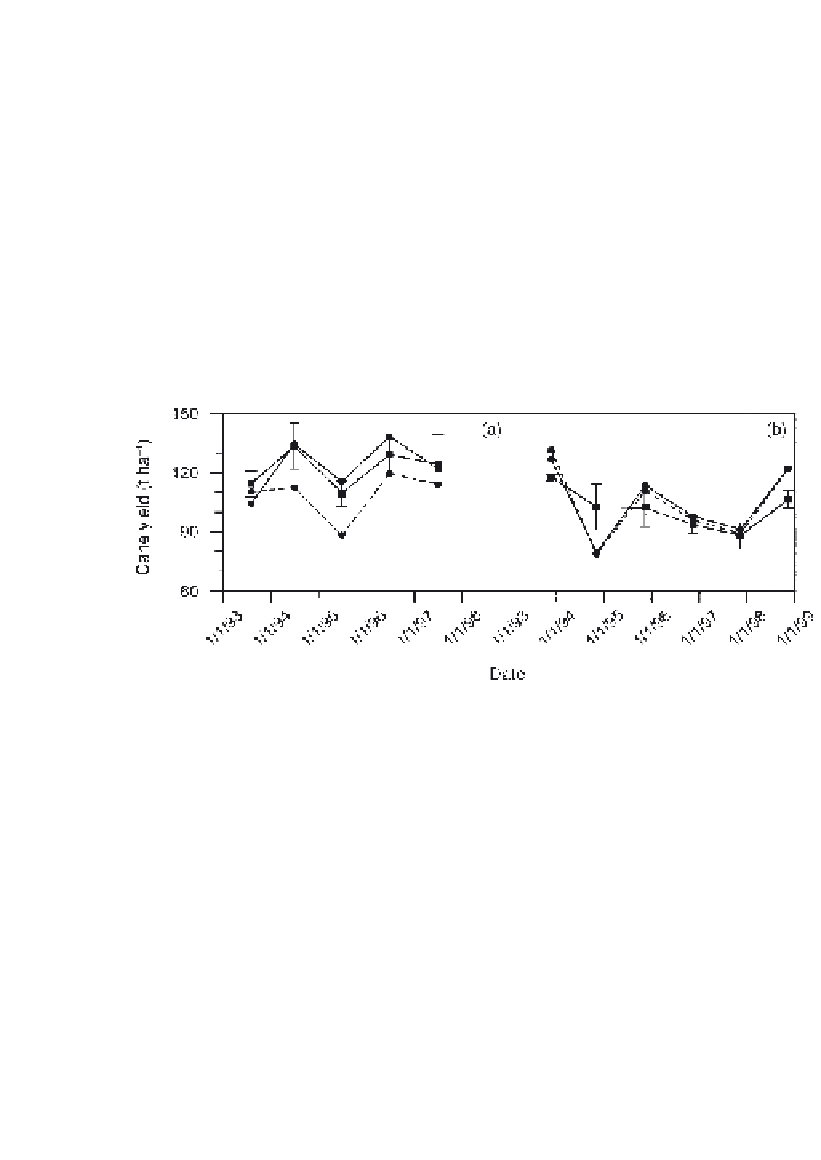Agriculture Reference
In-Depth Information
decomposition on yield was likely to have been caused by impacts of
decomposition on the water balance in the simulation (Table 2.4.2). The
simulations with the optimal decomposition parameters averaged lower
runoff and soil evaporation, and higher deep drainage as would be expected
with the greater residue mass throughout the season (e.g. Fig. 2.4.1). These
differences were not present in the first crop (data not shown) that was
planted into a bare field. Average simulated nitrate leaching from the soil
was higher with the optimal parameter scheme (Table 2.4.2) due to
increased deep drainage and changes in the patterns of N mineralization
(i.e. reduced immobilization of N with the slower decomposition) in the
simulation. However, there was little difference in denitrification. Overall,
the differences in simulated loss of N were not great enough to affect the
crop.
Fig. 2.4.2.
Comparison of measured (
v
; bars represent
±
1
SD
about the measured values)
and simulated (
r
) sugarcane yields at two experiments; (a) Mackay Early and (b) Mackay Late.
Simulations were performed with two parameterization schemes, the default parameters (Probert
et al., 1998b; dashed lines) and the result of the optimization (solid lines).
Table 2.4.2.
Effect of different residue decomposition parameter schemes on simulated
components of the water balance and nitrogen losses, averaged across all seasons, at the two
Mackay field experiments.
Water balance (% of rainfall)
Nitrogen losses (kg ha
−
1
)
Experiment/
scheme
Deep drainage
a
Runoff
Soil evaporation
Nitrate leached
Denitrification
Early/default
11
13
22
1
26
Early/optimized
14
11
12
5
24
Late/default
18
12
21
8
61
Late/optimized
19
11
20
14
60
a
Below the active rooting depth.















Search WWH ::

Custom Search